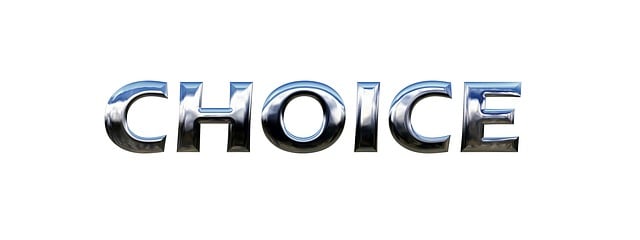Using Select Vehicle History Reports empowers car buyers to uncover a vehicle's past maintenance, accidents, and repairs, avoiding costly surprises post-purchase by proactively identifying potential recurring costs and hidden issues before buying.
Uncovering hidden maintenance costs is essential for making informed decisions when purchasing a used vehicle. This article guides you through navigating the complexities of vehicle condition assessments, exploring historical maintenance records, identifying routine service costs, and accounting for unforeseen repairs. By comparing and analyzing cost trends using select vehicle history reports, you can avoid costly surprises and make a savvy purchase.
- Understand Vehicle Condition Assessments
- Explore Historical Maintenance Records
- Identify Routine Service Costs
- Account for Unforeseen Repairs
- Compare and Analyze Cost Trends
Understand Vehicle Condition Assessments

Understanding Vehicle Condition Assessments (VCAs) is key to uncovering hidden maintenance costs. These assessments provide detailed insights into a vehicle’s history and current state, helping buyers identify potential issues or needed repairs before purchasing. By verifying car history instantly through trusted sources, you can access used car inspection reports that outline past services, accidents, and mechanical repairs. This proactive approach ensures you’re not caught off guard by unforeseen maintenance expenses down the line.
When it comes to navigating the pre-purchase phase, knowing how to track a car’s past is invaluable. Select Vehicle History Reports offer comprehensive data, enabling informed decisions. Don’t let hidden defects or undisclosed issues become costly surprises; leverage available tools to conduct thorough research and secure a smarter purchase.
Explore Historical Maintenance Records

Exploring historical maintenance records can be a goldmine for uncovering hidden costs associated with owning a vehicle. By delving into past service logs and repair invoices, you gain valuable insights into the car’s health and potential future expenses. Many online platforms offer vehicle history reports, allowing you to trace a vehicle’s journey, including ownership changes and maintenance activities. These reports serve as a comprehensive guide, revealing when and why repairs were made, enabling proactive budgeting for upcoming maintenance needs.
When selecting a vehicle, it’s crucial to utilize automotive history verification tools that provide detailed information. By checking the vehicle’s service records, you can identify recurring issues or routine services that may contribute to ongoing costs. For instance, a thorough review might uncover frequent oil changes, indicating potential engine issues or simply normal wear and tear. Understanding this historical context empowers buyers to make informed decisions and budget accordingly, ensuring they’re not caught off guard by unexpected maintenance surprises after purchasing the vehicle.
Identify Routine Service Costs

Uncovering hidden maintenance costs is a crucial step in responsible vehicle ownership. One critical aspect often overlooked is identifying routine service costs associated with your car. These expenses, while regular, can significantly impact your budget over time. To effectively manage these costs, start by gathering comprehensive vehicle history reports.
Selecting reliable Vehicle History Reports allows you to access detailed records, including past services, repairs, and even auto accident reports from various databases. By delving into the car’s service history through such reports, you gain valuable insights into potential recurring maintenance needs, ensuring proactive management and avoiding costly surprises.
Account for Unforeseen Repairs

Unforeseen repairs can significantly impact your budget, especially when owning an older vehicle or one with a complex history. One effective way to mitigate these hidden costs is by thoroughly examining a vehicle’s history before purchase. Selecting a reliable Vehicle History Report offers detailed insights into previous ownership, maintenance records, and any reported accidents or damage. This proactive approach allows car buyers to uncover potential secrets and find hidden car issues that may require costly repairs down the line.
By getting detailed vehicle info from these reports, you gain a clearer picture of the car’s overall condition. This is particularly crucial for those looking to avoid costly surprises post-purchase. So, whether you’re a seasoned car owner or just starting your journey, accounting for unforeseen repairs through proper research and due diligence can help ensure a smoother, more cost-effective experience in car ownership.
Compare and Analyze Cost Trends

Comparing and analyzing cost trends is an essential step in uncovering hidden maintenance costs, especially when purchasing a used vehicle. By scrutinizing historical data, prospective buyers can gain valuable insights into potential expenses down the line. One effective method to achieve this involves selecting and utilizing Vehicle History Reports (VHRs). These reports serve as powerful tools, enabling users to perform a used car history search and track a vehicle’s past.
Through VHRs, individuals can access detailed information on a car’s service records, accident claims, and ownership history. By how to track a car’s past and check its accident claims, buyers can identify red flags or recurring issues that might indicate future maintenance needs. This proactive approach ensures that potential owners are well-informed, making informed decisions and avoiding costly surprises post-purchase.
Uncovering hidden maintenance costs is a key step in making informed decisions when purchasing or maintaining a vehicle. By understanding vehicle condition assessments, exploring historical maintenance records, identifying routine service costs, accounting for unforeseen repairs, and comparing cost trends, you can avoid unexpected financial surprises. When selecting a vehicle, remember to delve into comprehensive Vehicle History Reports to ensure a well-informed choice.



